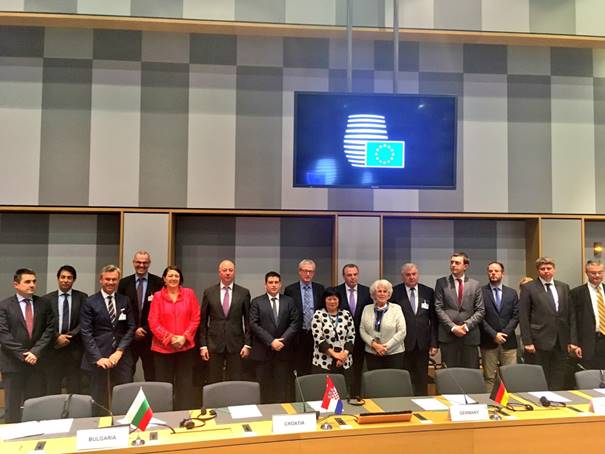On 3 December 2018, the Transport Ministers of the countries of the Danube region gathered in Brussels upon invitation of EU Commissioner Violeta Bulc to reinforce their commitment to an effective navigation status of the Danube and its navigable tributaries. The Danube Transport ministers of 10 countries (Austria, Bulgaria, Croatia, Germany, Romania, Slovakia, Bosnia and Herzegovina, Moldova, Serbia, Ukraine) adopted the “Conclusions on effective waterway infrastructure rehabi
European Strategy for the Danube Region: Danube Transport Ministers agree to step up the implementation of the Master Plan for good navigation status
- 05 December 2018

On 3 December 2018, the Transport Ministers of the countries of the Danube region gathered in Brussels upon invitation of EU Commissioner Violeta Bulc to reinforce their commitment to an effective navigation status of the Danube and its navigable tributaries.
The Danube Transport ministers of 10 countries (Austria, Bulgaria, Croatia, Germany, Romania, Slovakia, Bosnia and Herzegovina, Moldova, Serbia, Ukraine) adopted the “Conclusions on effective waterway infrastructure rehabilitation and maintenance on the Danube and its navigable tributaries”. The decision was taken to strengthen in 2019 and beyond the implementation of the Fairway Rehabilitation and Maintenance Master Plan developed by the EUSDR Priority Action 1A, in order to meet the targets fixed by the existing international legal framework.
Already 95 million EUR have been invested through EU co-financed projects within the frameworks of the Connecting Europe Facility (CEF), the Operational programmes and the Instrument for Pre-Accession. Considering the crucial economic role played by the region in the trans-European transport network (TEN-T) as well as the environmental advantages of inland navigation, ministers underlined the importance of resources in order to maintain activities in this sector.
The Ministerial Conclusions address the next steps to take and focus in particular on measures to encourage the joint work on Navigation and Security within the EU Strategy for the Danube Region (PA1A and PA11), with the view to further secure and harmonize fairway navigation conditions and digitalize administrative processes. In particular, removing bottlenecks at borders controls will allow more efficient processes in Danube navigation. Rehabilitation of strategically important lock facilities, reduction of administrative barriers and greening of the inland fleet also feature in the Conclusions.
